Ancient escape: 2024 marks 70 years for timeless Corkscrew Swamp Sanctuary
Sally Stein plods through a knee-deep section of Lost Lake as flocks of black-bellied whistling ducks launch into the clear blue sky.
Surrounded by a massive strand of budding cypress, Stein slides her feet through the sticks and leaves along the mucky floor of the lake, guiding a group of visitors through a remote section of Corkscrew Swamp Sanctuary,
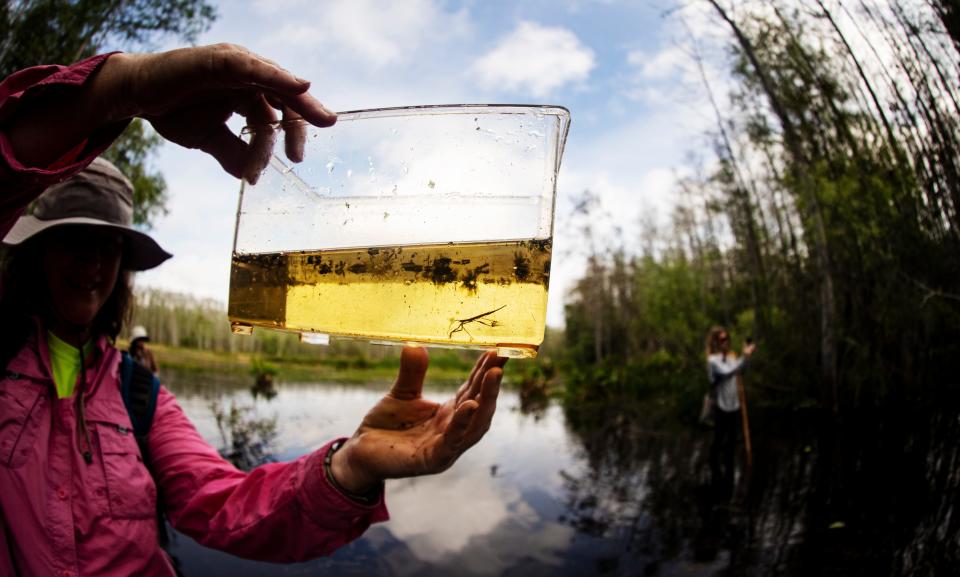
"There were also a couple of night herons but they flew off and there's a red-shouldered hawk over," Stein says as a pair of hawks scream overhead. "We call this Lost Lake because it was lost before."
Lush stretches of alligator flag and willow line the lake and its surface. The willow was once a problem as it grew too thick for native wildlife, hence the name: Lost Lake. The lake was functionally cut off from the birds and some other wildlife that depend on these wetlands for habitat and food.
"The willow is a native plant but it invades marshy areas and wetlands if you don't burn it enough," Stein says. "And that's what happened to this area. It was really hard for wading birds and ducks to get in here so about seven years ago we removed a lot of the willow and the birds came back."
Stein and others are celebrating 2024 as it marks the 70th year of Audubon's ownership of key parts of the watershed and the swamp itself.
Home of the largest old growth cypress forest on the planet, Cokscrew Swamp Sanctuary consists of 13,000 acres in the heart of the Corkscrew watershed. It's home to the largest tract of virgin bald cypress in the world and was once the breeding site of the largest colony of wood storks in North America.
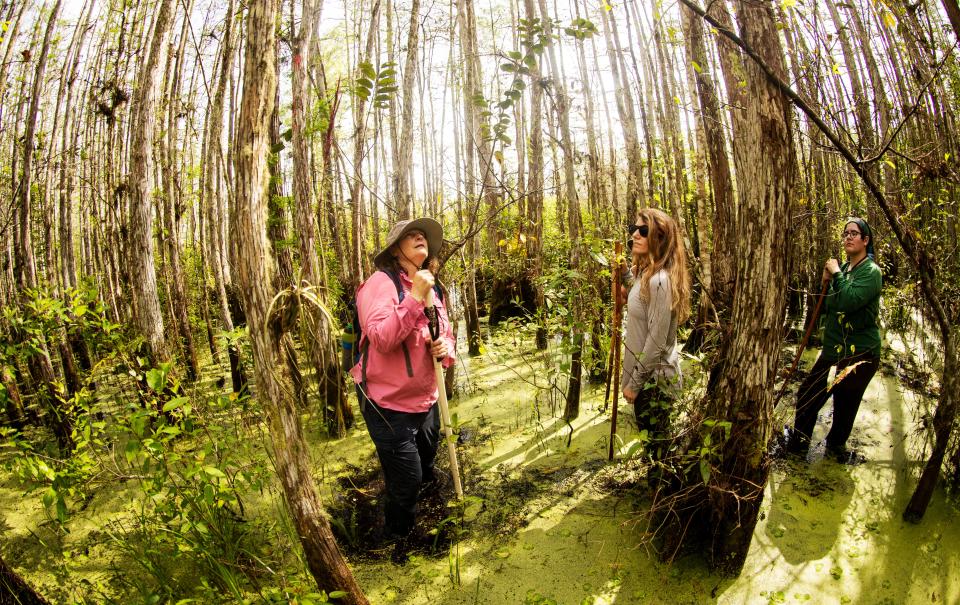
About a 30-minute drive inland from Naples, the swamp is home to the super ghost orchid (and lots of other orchids), endangered Florida panthers, black bears, herons, egrets, gopher tortoises and alligators.
"It really goes back to the overall role of Audubon in Florida in helping protect our resources and lands and wildlife for 124 years now," says current sanctuary director Keith Laakkonen. "Audubon really first came to Florida with the plume hunting and apparently Guy Bradley spent part of his life here before he lost his life protecting birds."
Bradley is one of the most famous figures in Florida conservation history, and his name dons the Flamingo visitor's center in Everglades National Park.
"Historically there were 60,000 wood stork nests," he continues. "When you get to the '50s, that's when people really started to realize how special this place was. And then the loggers were coming through Fakahatchee (Strand) and Bird Rookery Swamp and the community and Audubon worked with the loggers to acquire the first core of the sanctuary."
For centuries the source of some of the cleanest water on the planet, the swamp is located in the heart of the Corkscrew watershed, and it's a key piece of green space that's used by threatened and endangered species.
While it provides habitat for large-ranging animals like panthers, Corkscrew Swamp also acts as a wildlife corridor, allowing animals to pass from the Big Cypress National Preserve and the Florida Panther National Wildlife Refuge to places like the 60,000-acre Corkscrew Regional Ecosystem Watershed, or CREW.
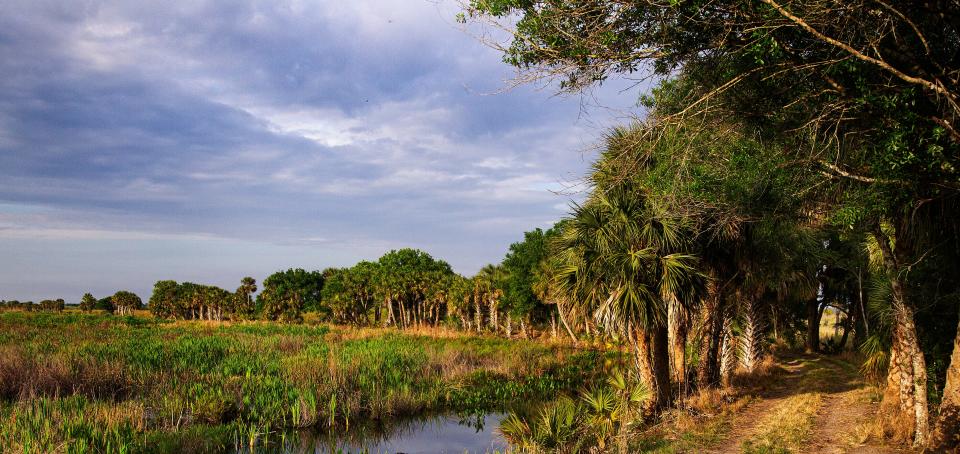
"At Corkscrew, you can still see the wildest elements of what Florida has ever been, and potentially to see charismatic panthers, alligators, black bears, roseate spoonbills and wood storks," says former sanctuary director and biologist Jason Lauritsen. "The wildlife there is still wild, and that's increasingly rare in a state that has as many people as we have."
Clean water, wildlife connectivity
The land, trees and plants in the swamp act has habitat and feeding and breeding grounds for many threatened and endangered species.
It's also a tremendous source of clean freshwater flowing to the coast in south Lee and north Collier counties.
"Today, Corkscrew is home to some of the cleanest water in Southwest Florida, and that is more important than ever," Lauritsen says. "This water is going to the coast and every Floridian understands vividly how important it is to have clean water flowing to our coasts, so we don't feed harmful red tide and blue-green algae blooms."
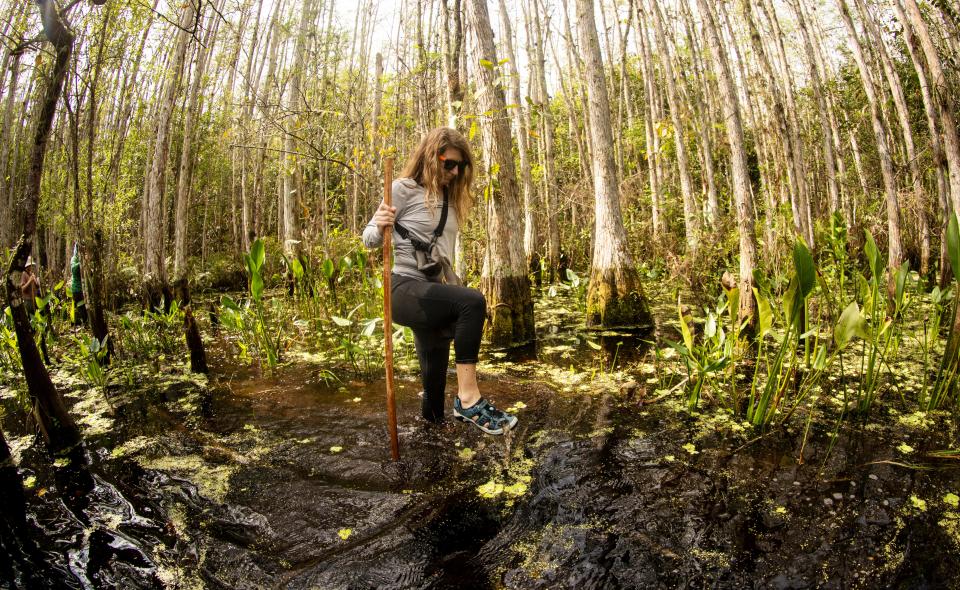
The swamp is also in the middle of a group of preserve lands, from the Okaloacoochee Slough Wildlife Management Area (or OK Slough), to the Florida Panther National Wildlife Refuge and even Everglades National Park.
"That's a complex of open space and wild lands that complement one another and species travel back and forth between the two and the OK Slough, Dinner Island and Picayune Strand, the panther refuge and Big Cypress National Preserve," Lauritsen says.
Why is it called Corkscrew?
The swamp got its name from what is today called the Imperial River in Bonita Springs.
This system was known for hundreds of years and by various cultures and people as the best source of freshwater in this part of Southwest Florida.
"Corkscrew got its name from the Imperial River," Lauritsen explains. "It was the mid-1700s or late 1700s when ships were going up and carrying supplies in the Gulf and they needed to replenish water during the dry season and they'd row upstream to find it. And it became known that this one particular river was the best place to get the best water and they called it Corkscrew because it corkscrewed as you went along."
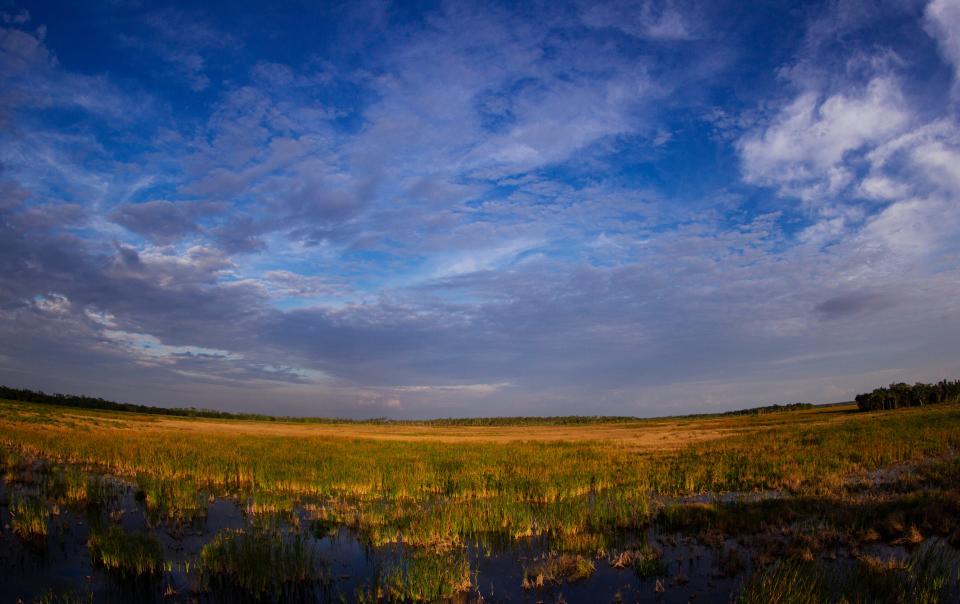
Lauritsen said the importance of a naturally flowing wetland system was obvious even then.
"All of the sailors at the time know of this one special river called the Corkscrew, and it's a testimony to the expansive wetland," Lauritsen said. "Those sailors recognized the value of those wetlands and it touched them tangibly."
A boardwalk through the cypress
The most popular part of the swamp for visitors is the renowned elevated boardwalk that winds through a pristine cypress slough.
"These is a Galapagosesque quality on the boardwalk, where the animals are accustomed to people being on the boardwalk," Lauritsen says. "And when people are nearby the animals are acting and behaving as they normally do. This is what historic old Florida really was."
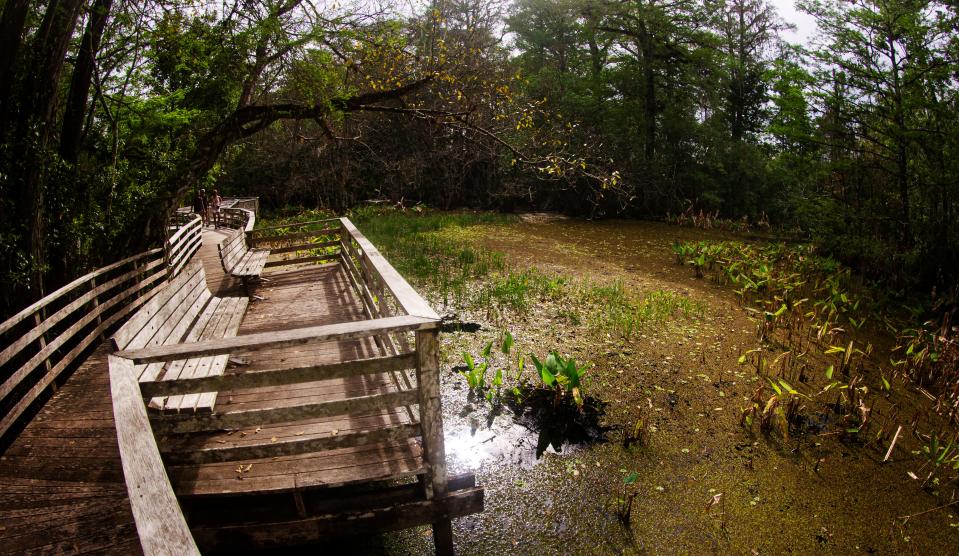
The boardwalk is referred to as a 2.25-mile adventure by the sanctuary staff as it winds through some of the most impressive cypress strands left in Florida.
Laakkonen says the boardwalk offers visitors a chance to see what Florida was like 500 years ago, when the indigenous Calusa were using Corkscrew Swamp.
"You can go into this ancient swamp and see one of the best birding locations in the state of Florida and stay dry," he says. "I've come to Corkscrew since I was a kid and being on that boardwalk feels like 1491. But the boardwalk is less than point-5% of the place."
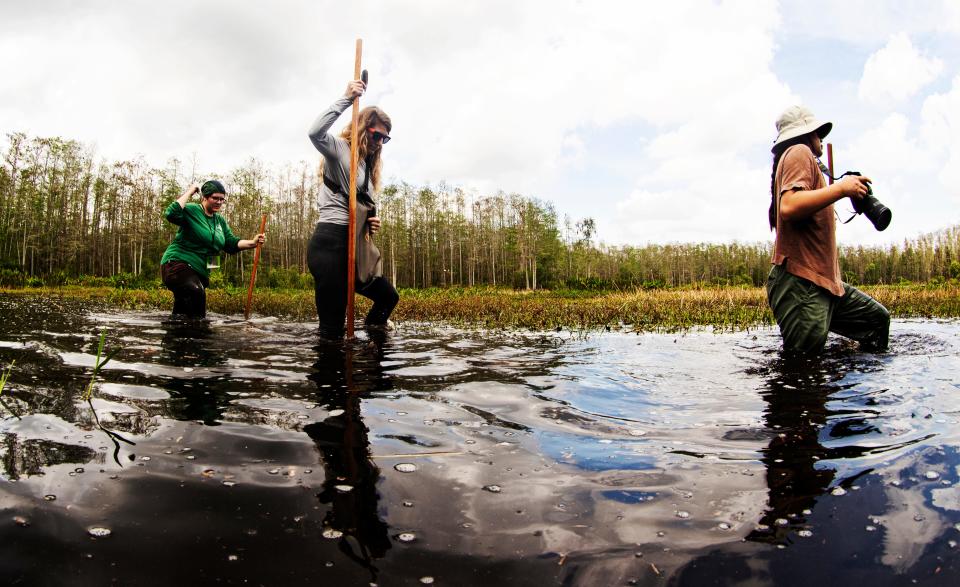
Areas surrounding Corkscrew Swamp have been developed, and those land conversions may be part of the reason that wood storks rarely nest here anymore, Lauritsen and others say.
"We have a lot of beautiful parks and preserves that are less wild and Corkscrew happens to be still incredibly wild," Lauritsen says. "The entire 20 square miles of it is wild. But it has been impacted by development encroachment, nutrient enrichment, shrunken home foraging areas, increased fragmentation with increased traffic on more roads. It's become more isolated than it was, so it's in a tenuous position with the landscape."
A look at Corkscrew Swamp's future
Back at Lost Lake, 16-year-old Marsh Wraithmell examines willow trees and finds a nest of tiny caterpillars.
Wraithmell's mother, Julie Wraithmell, is the executive director of Audubon Florida, and the two were in the Naples area recently studying entomology and conservation.
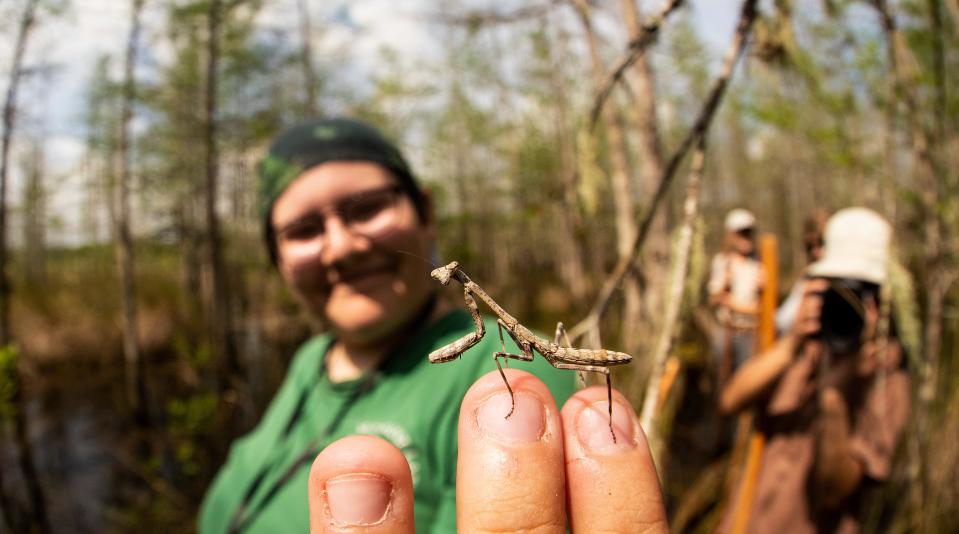
A sophomore at Sail High School in Tallahassee, Wraithmell finds a cluster of damsel flies and beetle larvae.
"It's some type of caterpillar," Wraithmell says while the tiny bug flops and squiggles. "They're going to turn into some type of web moth, but I'm not sure because there are so many species here."
Wraithmell wades toward a willow tree and discusses the future: "I'm probably going to the University of Florida and they have a really good etymology program."
Still, Lauritsen and others says the sanctuary still faces threats.
"Its fate is not secure," Lauritsen says. "There are lots of way to lose connection of Cokscrew and the surrounding watershed and the Estero Bay watershed."
"And one of the things I've observed is over time places we used to take for granted become more precious and we recognize their value in part because of the scarcity and the change that goes on around it and we tend to love things to death," he says.
Things to do
While the boardwalk is the major draw for the preserve, the sanctuary also offers guided tours, summer camps and educational programs.
Corkscrew Swamp also has a nature store, which offers gifts, jewelry, art, field guides, birding books and toys.
Volunteers are also welcome at Corkscrew Swamp.
Corkscrew Swamp Sanctuary
375 Sanctuary Road, Naples
(239) 348-9151
Online: corkscrew.audubon.org
Admission: General: $17; full-time college student (with valid school ID): $10; children 6 to 14: $6; children 5 and under: free. Discounts for military veterans and members of National Audubon.
Connect with this reporter: Chad Gillis on Facebook.
This article originally appeared on Fort Myers News-Press: Florida's Corkscrew Swamp Sanctuary an international gem. Here's why

